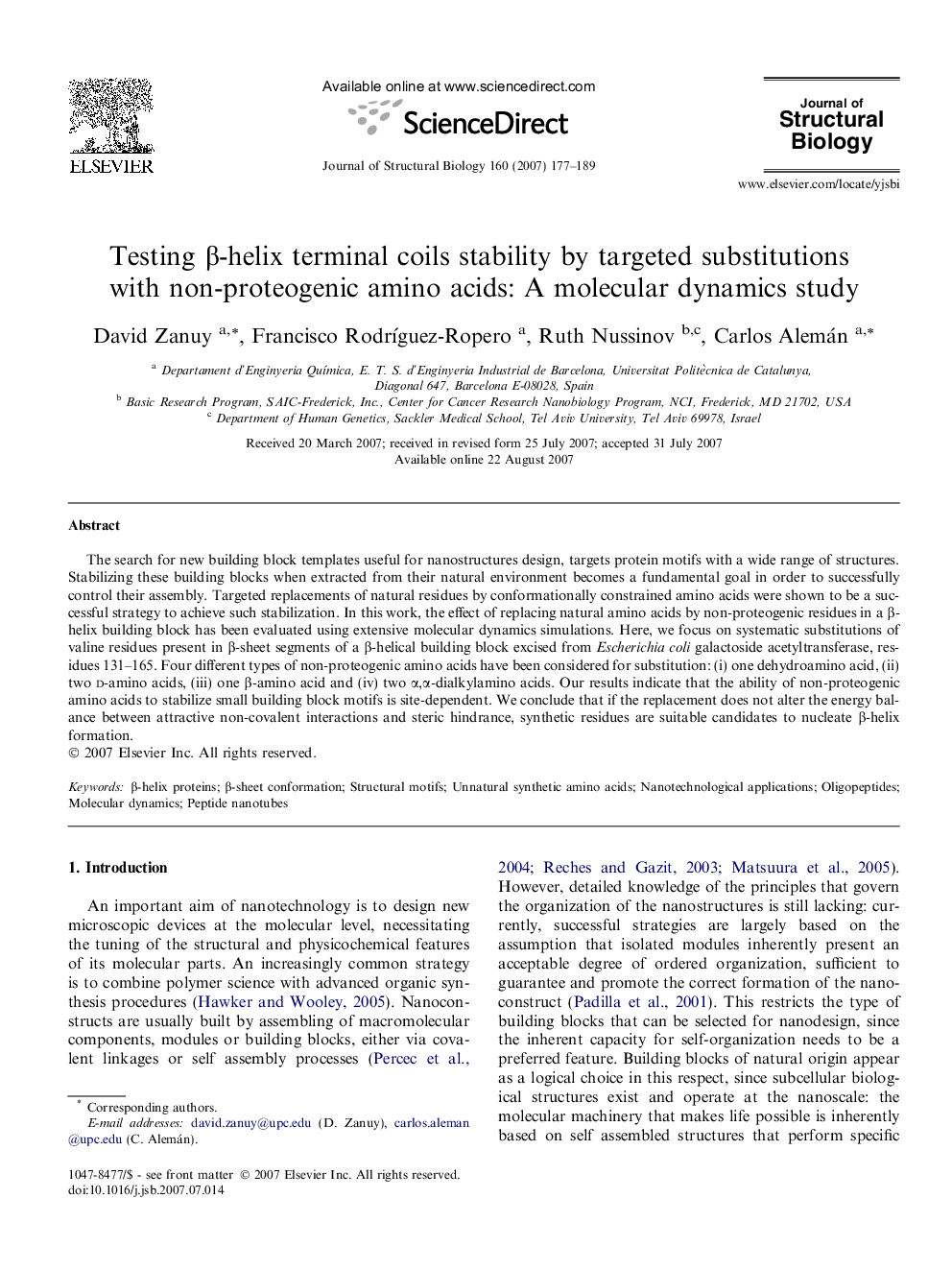| Article ID | Journal | Published Year | Pages | File Type |
|---|---|---|---|---|
| 5915238 | Journal of Structural Biology | 2007 | 13 Pages |
Abstract
The search for new building block templates useful for nanostructures design, targets protein motifs with a wide range of structures. Stabilizing these building blocks when extracted from their natural environment becomes a fundamental goal in order to successfully control their assembly. Targeted replacements of natural residues by conformationally constrained amino acids were shown to be a successful strategy to achieve such stabilization. In this work, the effect of replacing natural amino acids by non-proteogenic residues in a β-helix building block has been evaluated using extensive molecular dynamics simulations. Here, we focus on systematic substitutions of valine residues present in β-sheet segments of a β-helical building block excised from Escherichia coli galactoside acetyltransferase, residues 131-165. Four different types of non-proteogenic amino acids have been considered for substitution: (i) one dehydroamino acid, (ii) two d-amino acids, (iii) one β-amino acid and (iv) two α,α-dialkylamino acids. Our results indicate that the ability of non-proteogenic amino acids to stabilize small building block motifs is site-dependent. We conclude that if the replacement does not alter the energy balance between attractive non-covalent interactions and steric hindrance, synthetic residues are suitable candidates to nucleate β-helix formation.
Related Topics
Life Sciences
Biochemistry, Genetics and Molecular Biology
Molecular Biology
Authors
David Zanuy, Francisco RodrÃguez-Ropero, Ruth Nussinov, Carlos Alemán,
